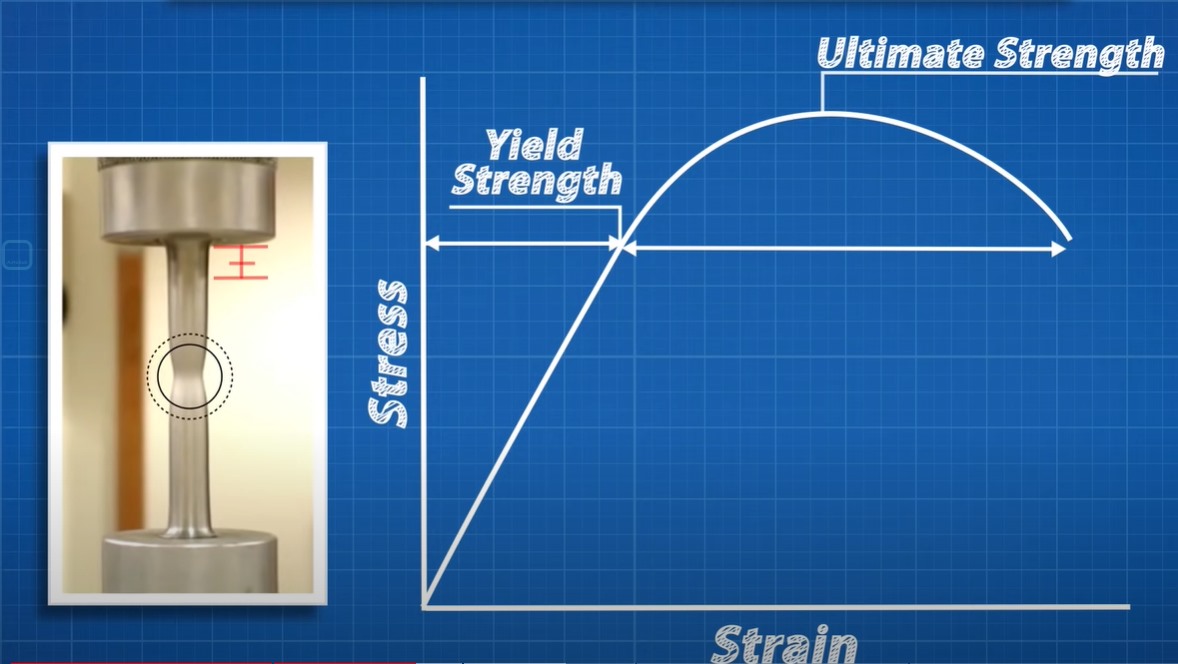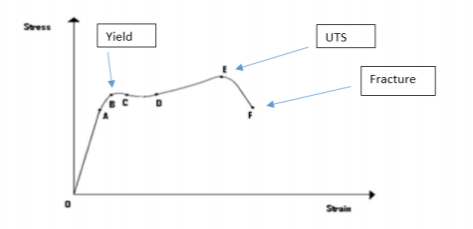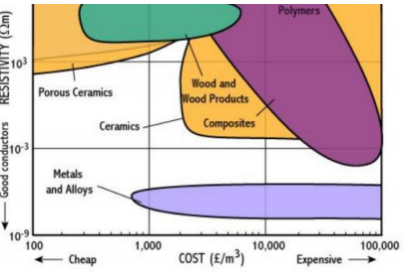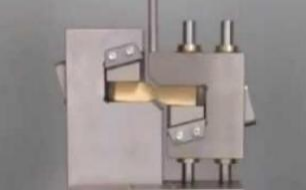Strength VS Stiffness: What is the Difference Between?
 Aug 31,2023
Aug 31,2023

StrengthvsStiffnessdictatesdesignengineertoqualifyMaterialdesign, Structuraldesign, Functional design and Dynamic design with the application of Design conditions, Environment, Function and Operation, so that job can do its work in due course of life span. But to select proper material it is much important to select optimum parameters with respect to cost and functional performance, because you cannot use job with so much expensive cost.

What is Stiffness
It is property of material to resist deformation in it on application of force and remain in the region of lower side of yield strength, so that minute deformation can also comeback to its original shape without changing dimension of original material. Material strength is also measure of same property because it can also tell designer that this material has high young modulus or stiffness in it with straight curve of Stress-Strain curve. Thus you need to check by various means that which method is significant for your design requirement so that same method can have results for design.
For more information please visit on following YouTube links:
Units for Stiffness
Units for stiffness are N/m or force per unit linear dimension when it is understate of external factor of tension or compression, numeric value of it comes from testing machine display and unit dimensions from theoretical equation. Thus you have to find only stiffness calculation result either from tension test stiffness or by calculating torsional stiffness because only numeric value of machine output is the basic result of this test.
Equation for Stiffness
Stiffness vs Strength has also relation with respect to their finding ways of numerical value because their background phenomenon is totally different from each other thus result of testing machine and equation also has difference between them.
Equation for Stiffness is
F= K.x F = Force K= Stiffness constant X= Deformation Stiffness becomes its intrinsic property when material manufacturing get completion because now stiffness value is constant during remaining lifespan.
Stiff Material
Material Stiffness gives an idea that how this material will behave whenever force or external inertial load make application upon it. High young modulus material e.g. High strength steel, Diamond, High Carbon surface steel etc. have high stiffness value due to their tensile strength and resistance against indentation. Thus it is obvious that hardness, strength and less deformation is the result of same materials in field due to their structural integrity.
Stiffness of the Material
This property tells about the loading behavior of the material that whenever force acts upon it then how it can sustain that stress and deform itself to create equilibrium in behavior to show hardness toughness. Its tensile strength is the main indication of this property because it tells that how it will show deformation on working force. Compressive strength has also relation with it because it can give same behavior as of tensile strength for low deformation against high force in compression side.
What is Stiffness in Engineering?
It is very important property for designer to understand that which material will go in large deformation nominal amount of force because large deformation behavior is no need for any structure designer in safety class equipments. Toughness behavior has very important aspect with this property because if material has high toughness value then its stiffness will go towards lower side.
What is Strength
Whenevermaterials Stress-Straingraphhas output ontestingmachinethenthere is point where material strength or tensile strength has value on it. This value has relation with bending strength, damping performance and structural integrity of material because all have direct relation with each other indirect form. In other way report of tensile strength only can give idea about material strength, material stiffness and bending strength.
Units for Strength
It has its measurement in Pascal or N/m2 because it is the response of material upon application of force, thus result is tensile strength, compressive strength or any other form of same parameter. High Strength and low alloy steel can have strength of around 1200 MPa because of its alloying addition, heat treatment, martensitic structure and carbon content in it. Thus high values of Pascal has very common form of Mega Pascal due to large numerical value because if there are seven toten digits of strength in each material then it is difficult to write them in report form.
Difference Between Strength and Stiffness
Strength vs Stiffness has many aspects to describe in engineering material selection because majority of materials have these two properties in their design simulation and acceptance criteria due to toughness, material strength, mechanical advantage, hardness toughness and stiffness calculation. Table.No.1 have description for Strength vs Stiffness in many aspects,
Strength Stiffness It is resistance against force for ultimate break of material. It is resistance for rigidity of materials. It is behavior of material without breaking of it. It is behavior of material without having deformation in it. It relates to physical failure in design. It relates to functional failure in design. It can be elastic and brittle. It is for elastic only. Table.No.1. Strength vs Stiffness.
Strength vs Stiffness Graph
Stress-Strain is graphical representation of Strength vs Stiffness graph, because it shows that how material breaks at high stress or what is stiffness value of it from slope of same graph. Figure.No.1 shows behavior of Strength vs Stiffness slope and ultimate tensile strength.

Figure.No.1. Stress-Strain Graph.
Behavior Under Load
Figure.No.1 shows that whenever force make its action upon the job then it receive plastic deformation in it which is change in behavior of material, thus material behavior has relation with Stress-Strain graph. Up to yield point no permanent change in material is present because its atoms are just going away without slipping. But after yield pointy they do slip by dislocation, thus you can say that it is going to break at ultimate tensile stress point.
Role in Material Selection
Strength vs Stiffness is very important factor in selection of material because Material Composition, Damping performance, Energy efficiency, mechanical advantage, Calculating torsional stiffness and Strength are important factors. High strength material is need of structure having high value of stress in it but if acceptance criteria have relation with deformation as well then it is another aspect to consider. Thus stiffness plays an important role in this case because it is the property in materialselection process which can control deformation of material/ structure in application without making catastrophic failure in field.

Figure.No.2 shows materialselection chart.
Strength Application Example
This property tells designer to evaluate material in different form of bending strength, torsional strength, yield strength and ultimate tensile strength because in each failure mode strength has its importance. Usually if you select structure material then it can resist against failure mode with good strength. Like ASTM A 36 is structural steel and has strength of 250 MPa in yield and 485 MPa in ultimate tensile.
Table.No.2 shows strength of different materials.
| Material | UTS in MPa |
| Steel, high strength alloy | 760 |
| Acrylic, clear cast sheet | 87 |
| High-density polyethylene (HDPE) | 37 |
| Polypropylene | 19.7-80 |
| Steel, stainless AISI 302 | 620 |
Stiffness Application Example
It relates to deformation criteria in materialselection of designer, like cast iron shows less deformation in application of load that is why all the CNC machining frames of foundation are of cast iron for less vibration and deformation in machining process. Same is the case with overhead crane in workshops because there too deformation is against safety feature without consideration of strength acceptance or failure because swaging in Crane Bridge is not safety thing for user.
Measurement Techniques
Strength measurement has different ways but famous one is yield strength for design process because this point tells you to avoid how many stresses in structure to remain in elastic range. That is whyallthe acceptance criteria use yield strengthindifferent equation so that material does not have permanent plastic deformation in application to avoid strain hardening of it. For stiffness young modulus is the indication or slope of elastic range of Stress-Strain graph can also tell you to find the correct behavior of material whenever it is under application of force or load.
Strength: Tensile Test Toughness
Area under the Stress-Strain graph indicates the toughness property of material because in all its region it is the behavior of material to absorb the external load without making ultimate break. Thus in actual form it is energy to show absorb capability of material without ultimate failure and same representation is the goal in Charpy Impact Test procedure. Compressive Tests:
As a designer you can think that how your material behave in different application mode because tension and compression both are dominant phenomenon in engineering application mode. Let say compression is always present even it has design for tension case, for example moving engine piston does not have tension in all cases because compression is also present in half of its cycles. Thus compression test is also major requirement finding strength of material even in tension mode job.
Shear Tests:
This tells you that at how strength or force material will cut on its shear planes without going in tension or compression mode because it is approximately perpendicular to that mode. Let say scissor is shearing the material by putting less force as compare to tension and compression mode, you can say it is approximately 0.4 times of tension or compression. Figure.No.3 shows sheartest of sample.

Figure.No.3. ShearTest.
Stiffness: Stress-Strain Analysis
This analysis can give slope of its graph to indicate that how much slope is present in it, because this slope make its explanation to tell you that this much deformation is present in structure with this much force.
Modulus Measurement
It is slope finding measurement of stress vs strain graph to find the value in for form of Young modulus or elastic modulus, it tells that how much strain is the result of stress behavior of material. This value is very important for your design analysis because all other factors are already present in it , like Ansys accept modulus measurement and posionn’s ratio to describe the whole material in static loading form.
Strength and Stiffness of Parts Design Process: 7 Key Factors
Strength vs Stiffness is much important tool of designer for any materialselection process because whole lifespan behavior of structure is from selection process of material. Thus if you are making simulation of any material then find value of young modulus and yield strengthof materialto makerelationof Strengthvs Stiffnessindesign byanalysisprocess.
For having quotation of strength vs stiffness design, 3d printing of scale down model and result validation please click on thislink.
Define Requirements
Design process always consider the load or force action upon material and load combination of Force + Seismic condition, Force + wind load condition and Force + corrosion condition to find the scenario of real-time operating conditions.
Conceptual Design
Job shape, size and its assembly arrangement can also make effect in combine factors to decide the behavior of Strength vs Stiffness in structure and to find the correct material in arrangement of optimum design methodology. For example in solar panel frame energy efficiency arrangement of members is the important aspect to cover in conceptual design rather strength vs stiffness factor.
For materialselection guide and its quotation please click on thislink.
Material Tests
UTM machine can make tests for finding the strength vs stiffness behavior of material and to form output in form of tensile strength, yield strength, % elongation, modulus of elasticity, density and fatigue resistance with the factor of creep behavior. Thus strength vs stiffness design factor can make decision to these factors and ultimate application of material without any making references of theoretical charts and tables.
Iterative Design
It is design concept of strength vs stiffness by continuous change of material from feedback of customer/ users, for example if material ASTM A 36 is the choice of designer but people have complaint of large deformation during operation then designer should think about changing the high stiff material in next variant of product. 5.Prototyping and Testing:
Physical validation of product is also necessary to check strength vs stiffness criterial of product because analysis in design process cannot predict the actual behavior of product in realtime field.
Simulation Validation
Although decision of strength vs stiffness does not come from the simulation validation result only but there exist the support process of prototype testing and verification for validation of resultant parameters.
Continuous Innovation
Feedback from Simulation Validation, Iterative design and Prototype testing makes combine effort to develop the advanced variant of any structure or product so that final product can sustain the operating condition in useful manner.
Why Choose Tuofa for Parts Design and Manufacturing Service
When you decide to develop new product or custom parts of existing model then there is need of many factors for development of design methodology, production process, testing sequence and qualification criteria because developing new product is multi stage phenomenon. Thus expert team or organization has major role in all this process, Tuofa china having ISO 9001 certification) has experienced team of designers and production engineers to clearly communicate our needs into engineering product with criteria of strength vs stiffness. For more information please visit Tuofa China Website.
FAQs about Strength and Stiffness
What is optimum Stiffness value Crane Bridge design?
Its optimum stiffness should be of so much value that under the loading condition of full loadit doesnot deformtovisibleeyevalue. Becauseif somevisibledeformationispresent in it then it will create panic in people or staff working on floor level and using the same for carrying load from one place to another.
How to Validate Design?
Use the porotype testing methods and then compare the results with simulation analysis with same operating conditions, material, loading forces and resultant parameters, it gives the validation of your design and conceptual drawing for mass production.
Is high Strength material is always needed?
No, other material properties which have relation with Strength vs Stiffness do contribute in selection of particular material, these properties are Toughness, Young modulus, Fatigue resistance, Stress rupture properties and Thermal Ageing results.
 Tel/WeChat:
Tel/WeChat:  Email:
Email: 
 Home
Home
 What is CMM | Definition, Types, Components and Used
What is CMM | Definition, Types, Components and Used 







